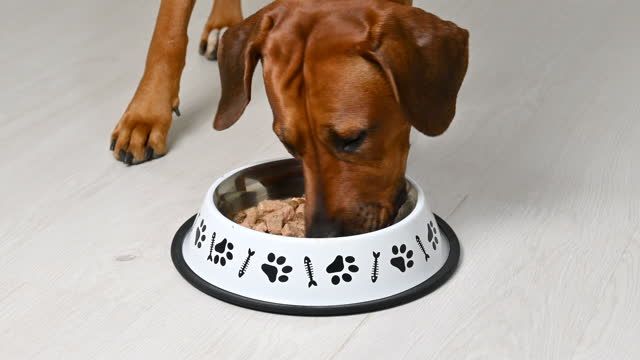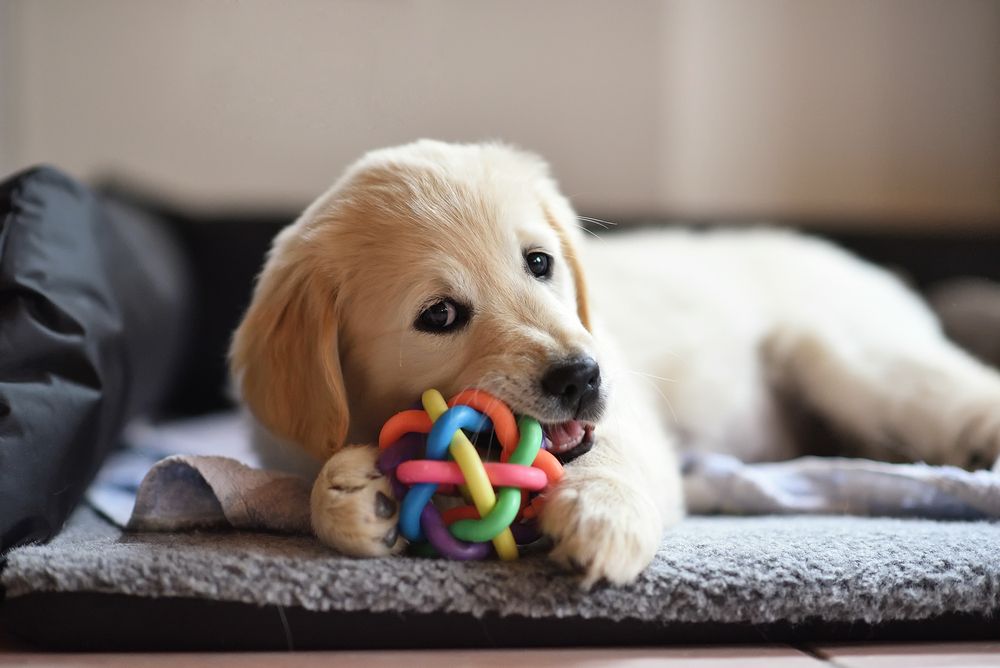Introduction
For dog owners, ensuring your dog chews their food thoroughly before swallowing is an important part of caring for their health and well-being. As a natural behavior for dogs, chewing plays a critical role in proper digestion. Dogs that swallow their food whole without chewing run the risk of choking or developing gastrointestinal problems. Understanding the benefits of chewing and being able to recognize signs of discomfort can help owners identify issues and choose the right foods and training methods to encourage thorough chewing.
This is a common concern for dog owners, as some dogs will gulp down their meals. Determining the root causes and consequences of not chewing properly helps owners make the best decisions for their pet’s nutrition and diet. Ultimately, taking steps to reinforce good chewing habits allows dogs to get the most nutrients from their food and avoid short and long-term health issues.
Chewing’s Role in Digestion
The digestive process in dogs begins in the mouth, where chewing helps physically break down food into smaller pieces that are easier to digest. As dogs chew, the food gets coated with saliva, which contains enzymes that begin breaking down starches and fats. The act of chewing also stimulates the production of more digestive enzymes and acids that will be needed later in the digestive tract.
Once the food has been chewed, it passes down the esophagus and into the stomach. The stomach contains hydrochloric acid and more digestive enzymes to further break down the food. The smaller food particles that result from thorough chewing can be more easily mixed with these digestive juices in the stomach to continue the digestion process.
If dogs swallow large pieces of food without properly chewing, it takes longer for the stomach acids and enzymes to break the food down. This can lead to digestive upset, discomfort, and even vomiting if the food sits in the stomach too long without being broken down into a digestible form. Proper chewing kickstarts the digestive process in the mouth and ensures the stomach can complete the next steps efficiently.
Risks of Not Chewing
Not chewing food properly before swallowing can pose a few health risks for dogs. One of the most common issues is choking. Large pieces of food can get stuck in a dog’s throat or block their airway, making it difficult for them to breathe.
According to Well Pets, “Habitual fast eating can sometimes lead to life-threatening medical conditions like gastric dilatation-volvulus (GDV).” GDV, also known as bloat, occurs when the stomach expands with gas and fluid, putting pressure on other organs. This is an extremely serious condition that requires emergency veterinary care.
Swallowing food whole can also lead to vomiting, as the dog’s body struggles to break down the large pieces. The undigested food can irritate the stomach lining, causing the dog to throw up. Frequent vomiting can lead to other issues like acid reflux and poor nutrient absorption.
In some cases, large pieces of unchewed food may pass further down the intestinal tract and cause a blockage or intussusception (where the intestine telescopes into itself). According to Wag Walking, these obstructions require surgery and can be fatal if left untreated.
Chewing food properly is the first step in the digestion process. When dogs gulp food down, it arrives in the stomach in larger pieces that are more difficult to break down. This stresses the digestive system over time.
Certain Foods Pose More Risk
Some types of food pose more of a risk than others if they are not properly chewed by dogs before swallowing. According to the FDA, certain foods like rawhide and bones are considered high-risk if dogs do not chew them thoroughly before swallowing large pieces (Toxic food for dogs, 2023). This is because these foods do not break down easily in a dog’s stomach and can cause blockages or even perforations in the digestive tract.

On the other hand, most kibble is intentionally designed and processed into small, easy to digest pieces that pose less of a risk if swallowed without thorough chewing. The dry, crunchy texture of kibble encourages dogs to chew before swallowing. So while it’s still important for dogs to chew kibble for optimal digestion and safety, kibble poses less of an immediate risk if swallowed in larger chunks compared to rawhide or bones (FDA Grain-Free Diet Alert: What Dog Owners Need to Know, n.d.).
In addition to rawhide and bones, some other high-risk foods dogs should always chew thoroughly include: corn cobs, sticks, rocks, socks, string and cloth items. Swallowing these items whole can lead to intestinal blockages or obstructions over time. Monitoring your dog’s chewing and avoiding high-risk items is key to preventing problems.
Signs of Discomfort
If your dog is not properly chewing their food, they may exhibit signs of discomfort or distress. Some common symptoms to look out for include:
- Loss of appetite – Your dog may seem disinterested in eating or only take a few bites before walking away from their food. This can be a sign of nausea or oral discomfort.
- Lethargy – A lack of energy or unwillingness to play or go for walks may indicate your dog is not feeling well.
- Vomiting – Dogs that bolt down their food without chewing run a higher risk of vomiting soon after meals. The undigested food can cause an upset stomach.
- Gagging or dry heaving – You may see your dog repeatedly open their mouth and contract their abdomen without anything coming up. This suggests distress in the throat or stomach.
- Excessive drooling – Unchewed food pieces can scrape the mouth and make it difficult to swallow, leading to increased drool production.
- Whining or pawing at the mouth – Your dog may communicate mouth pain by whining, growling or rubbing their muzzle on surfaces.
- Diarrhea – Undigested food passing quickly through the GI tract often results in loose stool or diarrhea.
- Burping – Rapidly gulping down air along with food can lead to more burping after meals.
- Bloating or distended abdomen – Eating too quickly may cause the stomach to expand with gas, making your dog’s belly appear swollen and rounded.
Paying attention to these signs can help you determine if your dog’s lack of chewing is causing chronic discomfort that should be addressed.

When to See the Vet
If your dog is showing signs of distress or discomfort from not chewing their food properly, it’s important to schedule a visit with your veterinarian. Some symptoms that warrant a vet visit include:
– Frequent vomiting or regurgitation after meals
– Gagging or dry heaving
– Loss of appetite or refusal to eat
– Signs of nausea like lip licking or salivating
– Difficulty swallowing or pain when swallowing
– Diarrhea or abnormal appearing stool
– Lethargy after eating
– Distended abdomen from swallowed air
– Weight loss from inadequate nutrition
Your vet can check for any obstructions or damage to your dog’s esophagus or digestive tract from improperly chewed food. They can also provide recommendations on how to encourage chewing, check for underlying dental issues, prescribe medications if needed, and monitor your dog’s health. Don’t wait if your dog is showing consistent signs of GI upset after meals – it’s important to have them evaluated by a vet. Proper chewing is vital for dogs to digest food and gain adequate nutrition.
Tips to Encourage Chewing
There are several tips and techniques you can try to encourage your dog to chew their food more thoroughly before swallowing:
Soak dry kibble in water or broth to soften it and make it easier to chew. Allow the kibble to soak for 5-10 minutes before serving. The added moisture releases aroma and makes the kibble more palatable (Source: https://www.urbanpetssupply.com/blogs/articles/most-effective-tactics-to-let-dogs-chew-their-food)
Mix wet canned food in with dry kibble. The different textures and moisture levels will encourage chewing. Start with a 25/75 wet to dry ratio and adjust as needed (Source: https://outwardhound.com/furtropolis/health-wellness/dog-doesnt-chew-food)

Use a slow feed bowl or puzzle toy that requires manipulation and eating around obstacles. This slows eating and encourages chewing each bite (Source: https://outwardhound.com/furtropolis/health-wellness/dog-doesnt-chew-food)
Hand feed kibble and make your dog chew each piece before giving the next. This lets you control the pace and ensure thorough chewing.
Feed smaller, more frequent meals so your dog doesn’t feel the need to gobble food quickly.
Training Techniques
There are several methods you can try to teach your dog to chew their food better:
Hand feeding kibble piece by piece encourages chewing and prevents gulping down food quickly (Source: https://www.urbanpetssupply.com/blogs/articles/most-effective-tactics-to-let-dogs-chew-their-food). Give your dog one kibble at a time and wait for them to completely chew and swallow before giving the next.
Using puzzle feeders or slow feed dog bowls with mazes, obstacles, or ridges also promotes chewing by slowing down how fast your dog can consume their meal (Source: https://outwardhound.com/furtropolis/health-wellness/dog-doesnt-chew-food). The obstacles force your dog to nibble small bits of food at a time.
Try moistening dry kibble with water or broth to soften it. This makes it harder for dogs to swallow quickly without chewing.
Use food dispensing toys like Kongs. Stuffing kibble inside and freezing encourages licking and chewing to gradually extract the food.
Praise and reward your dog every time you notice them chewing their food properly. This positive reinforcement helps turn chewing into a habit.
Risk Level by Age

The risk of choking or intestinal blockage from not chewing food properly varies based on a dog’s age. According to Chewing behaviour in dogs – A survey-based exploratory study – ScienceDirect, puppies and senior dogs are at higher risk. Puppies may swallow food whole because they are still developing their chewing skills. Senior dogs often have dental issues that make chewing difficult. With age, the muscles, bones, and teeth involved in chewing can weaken.
In both puppies and senior dogs, owners should monitor mealtimes and consider moistening or softening dry kibble. This makes it easier to chew and swallow. Puppies outgrow indiscriminate eating as they mature. But seniors may need dental care or lifelong diet adjustments to reduce choking hazards.
Conclusion
Chewing food thoroughly is extremely important for a dog’s health and wellbeing. As outlined, chewing aids digestion, dental hygiene, mental stimulation, and more. When dogs do not properly chew their food, they are at higher risk of vomiting, intestinal blockages, dental disease, and other issues. While some dogs may naturally chew less or swallow food whole, especially as they age, pet owners should actively train and encourage chewing habits. This can be done through food puzzles, chew toys, dental treats, scheduled mealtimes, and supervision.
In summary, proper chewing allows dogs to fully process and digest their food, while also providing enrichment through the physical act. Make chewing a top priority by providing the right foods and tools. Monitor your dog’s chewing habits, especially with age, and speak with your vet if excessive vomiting, gagging or other symptoms arise. Though it takes conscious effort, teaching dogs to chew is one of the best lifelong gifts you can give them for health and happiness.
